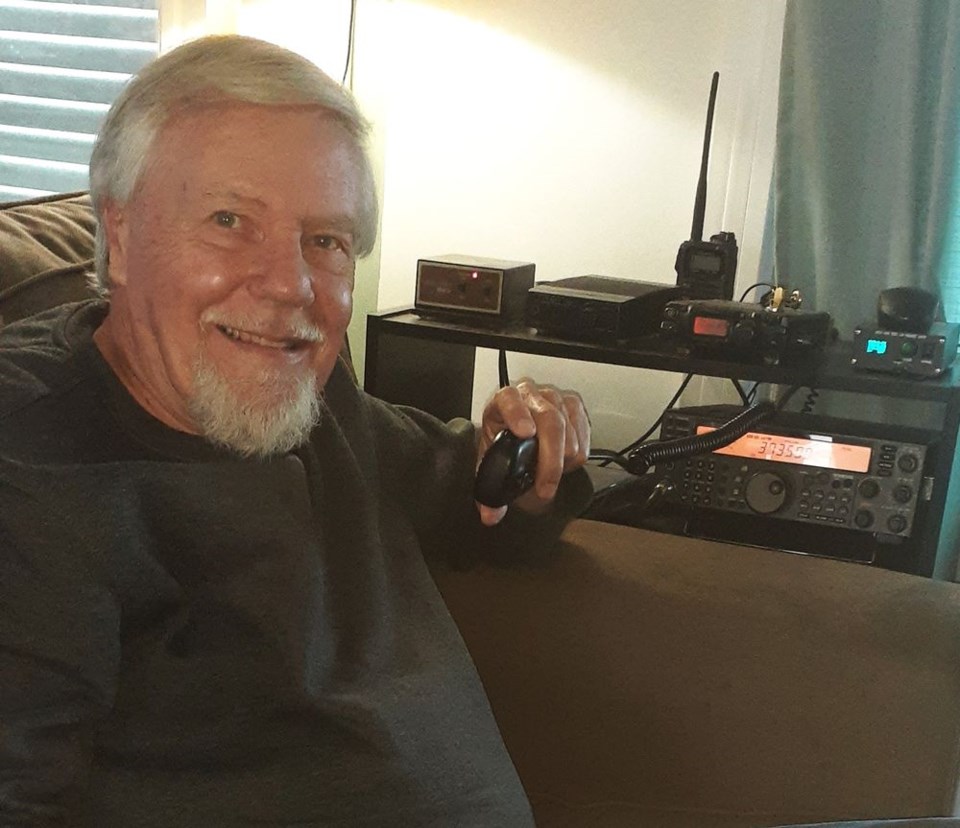Amateur Radio (or Ham Radio) is a popular hobby and public service that brings people, electronics and communication together. People use ham radio to talk across town, around the world, or even into space, all without the Internet or cell phones. It's fun, social, educational, and can be a lifeline during times of need.
Bob Drayer, VE5CQ, of Sturgis is one of only a few ham operators left in the local area who takes this hobby seriously. Drayer has been a licensed operator for 45 years and derives enjoyment out of С����Ƶ able to talk to others across the country and to be able to provide a valuable service if there was ever to be crisis. "It does not have to take a disaster for us to come into play," said Drayer. "If the Internet or cell phone were to ever be disabled we would be the ones responsible to relay important vital medical data to larger centres. We, as ham operators, keep our skills refined with on-the-air weekly meetings within our group and across the country."
Over the course of Drayer's 45 years of experienced he has seen firsthand the importance that ham radios and operators play in the world. He was involved a flash flood in B.C. in 1978 where campers were stranded and through ham radio he played a vital role of getting help that ended in the rescue of the campers.
"While it is a hobby, it is undoubtedly the most complicated hobby in the world. It is very rewarding, and the brother and sister-hood that is formed between ham operators around the world leads to many friendships. Often we never meet those friends in person and know them only as a voice and a call-sign on the air. There have been many changes through the years with it С����Ƶ a little easier to attain a licence and the usage of morse code not utilized as much and younger generation taking an interest," he said.
In the local area, other operators who share his passion for the hobby are Hein Bertram, VE5IO; Jerry Lisitza, VE5JRL; Grant See, VE5SS, and Troy Rogowski, VE5TBR.
Amateur Radio operators get involved for many reasons, they all have in common a basic or advanced knowledge of electronics, radio technology and operating principles, and pass an examination for the Industry Canada license to operate on radio frequencies known as the "Amateur Bands." These bands are radio frequencies allocated by Industry Canada for use by ham radio operators, as stated on the ham operators’ website.
The first wireless operators were landline telegraphers who left their offices to go to sea or to man the coastal stations. They brought with them their language and much of the tradition of their older profession. In those early days, every station occupied the whole radio spectrum with its broad spark-gap signal. Government stations, ships, coastal stations and the increasingly numerous amateur operators all competed for time and signal supremacy in each other's receivers. Many of the amateur stations were very powerful. Two amateurs, working with each other across town, could effectively jam all the other operations in the area. Frustrated commercial operators would refer to the amateurs’ interference by calling them "hams." Amateurs, possibly unfamiliar with the real meaning of the term, picked it up and applied it to themselves. As the years advanced, the original meaning has completely disappeared.
In 1873, James Clerk Maxwell presented his theory of the electromagnetic field. In 1901 Guglielmo Marconi communicated across the Atlantic with a radio device using high power and giant antennas from Signal Hill, N.L. To curb interference, the U.S. Congress approved the Radio Act of 1912, which required amateurs to be licensed and restricted some of the mayhem. The Canadian Parliament implemented additional rules and regulations. In 1914 the����was founded by Hiram Percy Maxim, who found that messages could be sent more reliably over long distances if relay stations were organized. The RAC, or Radio Amateurs of Canada, has served Canadian Amateur Radio Operators in that capacity for over a century. Amateur Transatlantic transmitting and receiving tests began in 1921, and in July 1960, Radio Amateurs made their first two-way contacts bouncing signals off the Moon. Amateurs also have dozens of their own satellites orbiting Earth to bounce signals around the globe.
��
��
��




